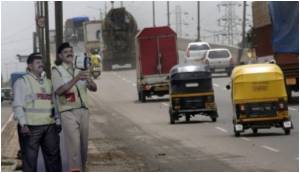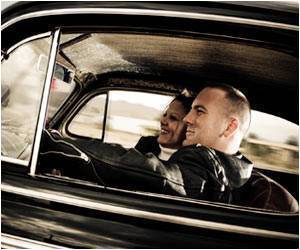Two preventable reasons why young pedestrians are struck by motor vehicles-poor guardian supervision and distraction because of mobile device use have been identified by trauma surgeons.

"Previous studies have only looked at discharge data, but this study captures all patients who were injured, whether or not their injuries were severe enough for them to be admitted," explained Nina E. Glass, MD, lead author on the study and a fourth-year general surgery resident at NYU.
Dr. Glass and colleagues collected prospective data on more than 1,400 patients who had been struck by motor vehicles and were treated in Bellevue Hospital Center''s emergency department between December 2008 and June 2011. Bellevue Hospital Center is an NYU affiliate and Level 1 trauma center with a catchment area that includes the lower half of Manhattan. Researchers interviewed patients and emergency medical services at Bellevue, then analyzed records on all patients who arrived within 24 hours of injury. Study results showed 377 patients sustained 986 fractures, mostly in the legs. Lower leg fractures were the most common, with 34 percent in the tibia, and 29 percent in the fibula. Seventeen percent had fractured pelvises, and another 15 percent had fractured ribs.
Older patients, at least age 55, were more likely to have multiple fractures and also were more likely to have bilateral fractures-instead of fracturing one leg, they tended to fracture both. "If you are older, and especially if you are a woman, you are more likely to have osteoporosis, so you are already at a higher risk for any fracture," Dr. Glass explained. Patients older than 55 had a mean of 3.97 fractures per patient, compared to a mean of 2.90 fractures per patient for those ages 15 to 55. Thirty-three percent of seniors sustained bilateral fractures, compared to 28 percent of younger patients.
In fact, when the team focused on data for patients under age 18, children and teens mostly had skin scrapes and minor injuries. A higher percentage of young patients were also discharged from the emergency department without admission, 70 percent vs. 67 percent of adult patients. Dr. Glass and colleagues examined the pediatric patient data more closely to identify correlations of injury given the circumstances of these accidents. "We saw that a high number of these patients had crossed in the middle of the block or crossed against the signal, particularly younger children under age six," Dr. Glass said. "All of them were supervised by guardians, but still, 44 percent darted into the street."
Researchers did not have enough police report data to determine each drivers'' liability, but they did examine how often patients were using mobile devices, such as mp3 players and cell phones. Though people younger than 18 made up 13 percent of the study population, nearly one in five patients ages 13 to 17 were sending text messages, listening to music, or otherwise distracted by a mobile device at the time of their accident. These activities occurred in a lower percentage of adults: 10 percent.
Advertisement
Other researchers in the study on pedestrian risk of fracture by age include: S. Rob Todd, MD, FACS; Ronald J. Simon, MD, FACS; Chad T. Wilson, MD; Vasiliy Sim, MD; Susan I. Brundage, MD, FACS; Sally Jacko, RN, MPH; Linda A. Dultz, MD, MPH; Dekeya Slaughter-Larkem, BSc (Hons); and Spiros G. Frangos, MD, MPH, FACS.
Advertisement
This study was funded by The New York State Governor''s Traffic Safety Committee.
Source-Newswise










